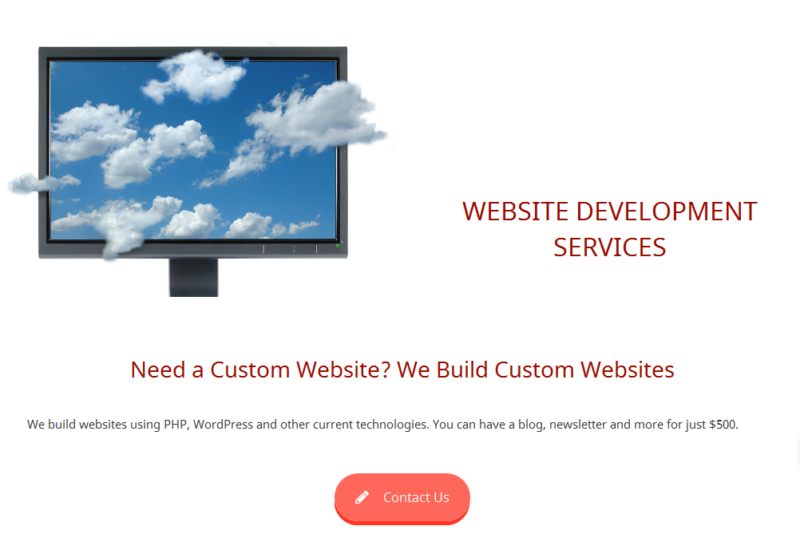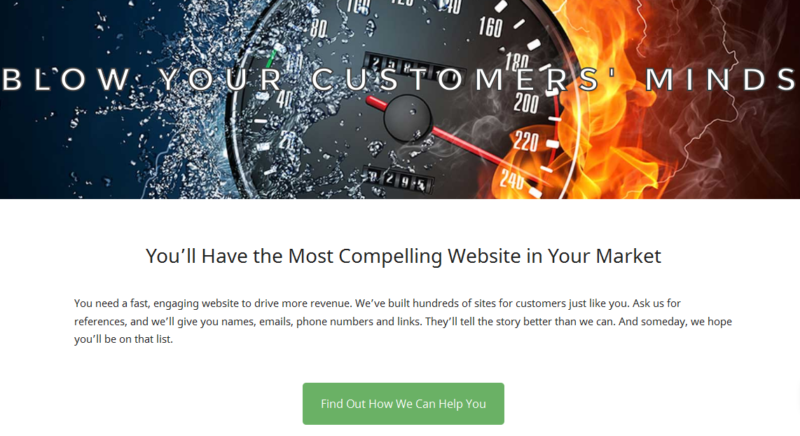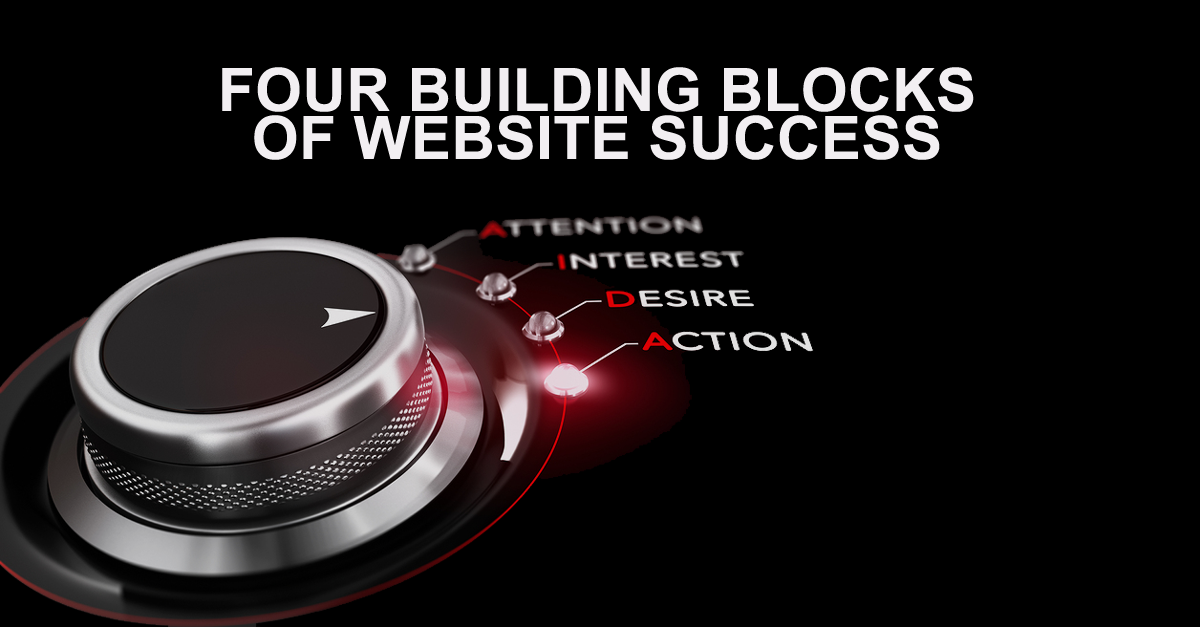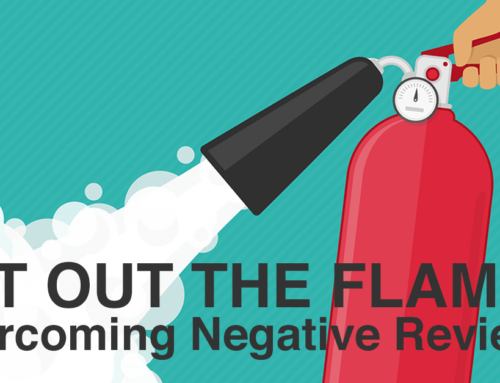[vc_row][vc_column][vc_column_text]We’ve heard about “sales funnels” for years. Prospects arrive at the top of the funnel, we sprinkle magic sales dust on them, and they proceed out the bottom of the funnel to become clients. Simple, right? Wrong. With the overwhelming amount of marketing we encounter every day, it’s hard to get anyone to SEE the funnel, let alone read our sales dust. And without those two key steps, online marketing and sales are dead on arrival. You may have read about AIDA, an acronym for Attention – Interest – Decision – Action. We’ve been explaining how to manage funnels in Octagon of BOOM, with reference to AIDA in some of our live presentations. AIDA represents the four building blocks of website success, and here’s our philosophy behind how you can use it to grow your revenue.
1. Building Blocks of Website Success: Attention
Without website visitors, you cannot sell anything online. Traffic is essential, and it’s not easy to build it (unlike the 90s when “you built it and they came” (ha!)). We recommend traffic building tips all the time to our clients. Do you have a newsletter? Do you publish regularly to your blog? Do you run online ad campaigns? Do you drive website traffic from your social media sites? Even if you’re doing those things and your content (or your product) sucks, you won’t get traffic. Even if you do those things once or twice, you won’t get traffic. You must REGULARLY offer HIGH QUALITY content to build your traffic.
How do we know? We see it all the time. We see sites that publish one blog post and walk away, and their web traffic charts are flat. We see companies that put out mediocre or weak content regularly in newsletters and blog posts, and their web traffic charts are flat. Conversely, we work with clients that publish great content every week, and their web traffic charts go “up and to the right”. Why does it work? Because search engines reward sites that publish, promote and update content regularly. You can not set it and forget it.
Even if you pay for traffic, which is sometimes essential to get the ball rolling, you need something good when the prospect arrives at your door. As we described in detail in Octagon of BOOM, figure out some good “top of funnel” (TOFU) offers, like checklists, white papers or how-to videos. We may be getting ahead of ourselves (offers are more a part of Interest), but it’s worth noting that your attention devices must have a correlation to what you offer next. For example, if you run a pay-per-click ad for $500 off, the page the visitor arrives on must start with that offer.
If you’ve been paying attention to Twisted Puppy’s last couple of newsletters, you are keenly aware of how we try to capture your interest (hint: juggling, It’s Science, Yo!“). That attention device probably worked (at least from what readers told us).
2. Building Blocks of Website Success: Interest
It’s super challenging to get attention and keep it. Headlines matter. Your first sentence matters. Images matter. Your offer has to be interesting. You have to connect to some emotion…or SQUIRREL! Visitors bounce. Let’s look at a sample of a landing page, with before and after views, to see what works.

Landing Page A

Landing Page B
Can you see the differences between Landing Page A and Landing Page B? Which design would you be more likely to trust and pursue?
3. Building Blocks of Website Success: Desire
At the next stage, the visitor has a choice to make, largely driven by desire. Do I keep reading or do I bounce? The decision is typically based on yet another emotional appeal. At the core of it is trust – if your visual cues indicate your business proposition is valid, you may have earned enough trust for the visitor to continue. How can you build trust like that? How about using trust symbols like awards, ratings, logos, testimonials and case studies featuring your clients?
Desire is also affected by your offer. We recommend that our clients use small offers at the top of the sales funnel. Things like downloadable checklists, case studies, special reports and educational materials are ideal – capture an email address in exchange for something small but useful. It’s difficult to get someone to sign up for a 30 minute consultation or a 20 minute demo if you haven’t established enough trust, so here’s a stepping stone to do so. If your material is good, you’ll earn more credibility. Then you can begin nurturing the leads you get with bigger offers, such as that 20 minute demo.
4. Building Blocks of Website Success: Action
Your “Call to Action” (CTA) is absolutely critical. Every page on your website should be designed around a specific CTA, whether it’s downloading material, subscribing to your newsletter or calling you to learn more. We recommend using one and ONLY one CTA if you can. If you offer three or four choices, the visitor will probably skip over them all. It’s also advisable to have the same offer repeated on the page to make sure the visitor can easily get to it. Most online marketing specialists suggest that the CTA should be clearly marked and illustrate the benefit of choosing the action.
Which CTA do you think will be more effective?


Testing the Four Building Blocks of Website Success
Success is a fickle beast. Online marketing fads come and go, and what works today may not work as well next summer. You must monitor your online marketing metrics regularly, to decide if your techniques are effective. You can set up Google Analytics for free, and with a little help from a website developer, you can monitor how well your pages perform. You should also test variations of your AIDA tools – traffic should grow over time and ultimately deliver more revenue. If traffic or conversions are flat, you’re overdue to test and make changes. When we ask questions like “which do you think is better?”, it’s completely subjective. Testing will prove or disprove your hypotheses. Then you can truly know about website success.
[/vc_column_text][/vc_column][/vc_row]





![Video Engagement [Infographic]](https://twistedpuppy.com/wp-content/uploads/2017/08/twisted-puppy-blog-video-engagement-1-500x383.png)


We hope you like our blog, and we’d love to hear what you think about this article. Do you agree about the importance of focusing on sales funnels and AIDA? Have you tried to optimize your site for conversion?